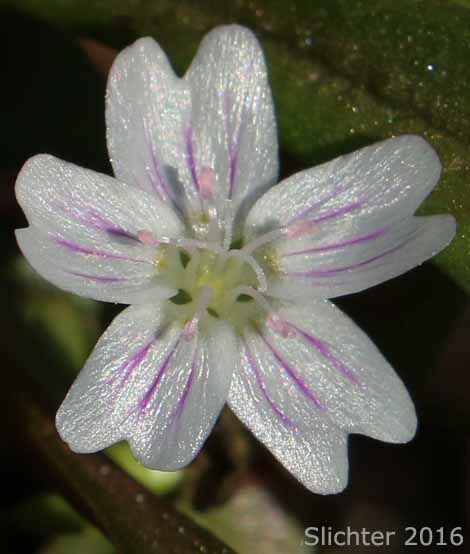 Characteristics:
Characteristics:
Candy flower is an annual or short lived perennial.
Peppermint-striped petals (5 petals). The coloration is white with pink stripes, and individual petals range from 6-12 mm long. 3-5 stamens are present. The inflorescence is a raceme.
The 2 stem leaves are elliptical-shaped, thick and fleshy, ranging from 1-5 cm wide and up to 7 cm long. They appear opposite one another on the soft , fleshy stem. The lower, basal leaves have long, thin petioles (2-3 time longer than the blades) and lanceolate, elliptic, or rhombic-ovate blades from 1-4 cm wide and as long or longer. The blades may also be narrowly lanceolate and 3-10 mm wide.
Candy flower has numerous erect to decumbent stems arising 10-35 cm high.
Candy Flower wilts quickly after picking.
Current classification has changed the genus name from Montia to Claytonia.
Candy flower may be found in the moist rich soils of open to shady woods from the lowlands to moderate elevations in the mountains..
Candy flower may be found over much of western North America. It may be found from Alaska south to southern California and east to Montana and Utah.
1. Candy flower may be used as a lettuce or spinach substitute in salads. The leaves, stems, and flowers may all be eaten. All parts are high in vitamins A & C.
2. The juices may be rubbed into the hair with one's hands for use as a styling gel.
3. Early miners reportedly let ants walk over the leaves to help give it a tangy, vinegar-like flavor